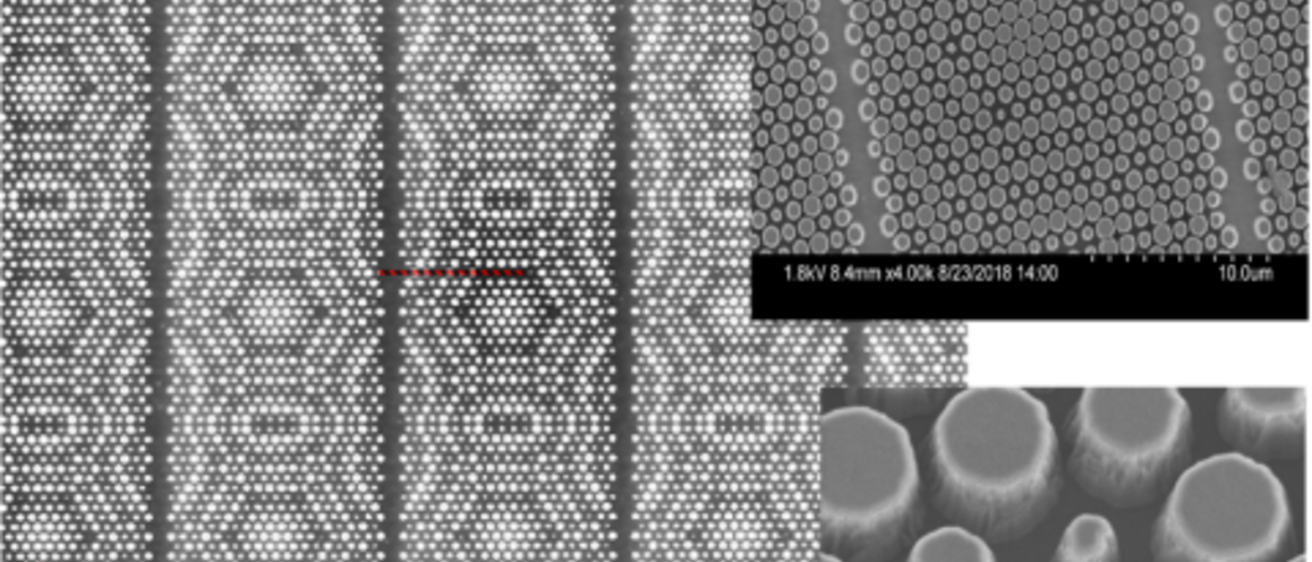Plasmonics and metamaterials are exciting research topics that involve manipulating interaction of light and matter on sub-wavelength scales, and often entails the fabrication of nanostructures, either metal or dielectric, at interfaces. Surface plasmonics often involve making periodic metal (LRC) nanocircuits and structures on a surface that are driven or excited by incident electromagnetic waves. Surface plasmons are coupled surface waves at an interface between electric charges and photons. They can be used in a great range of ways: local enhancement of electric fields to improve radiative recombination of electronic excitations, or absorption of incident light; to enhance nonlinear material response; or to extract trapped light from high index materials through evanescent excitation. Whereas plasmonics works with metallic nanostructures, metamaterials work with sub-wavelength dielectric materials, and alter the direction of light propagation through phase shifts induced by scattering particles, and light interference between particles. Thus a plane wave incident on a meta-surface can "refract" light even if it is normally incident. Thus its action allows one to skirt Snell's Law.
